Nuisance alga discovered at Papahanaumokuakea Marine National Monument
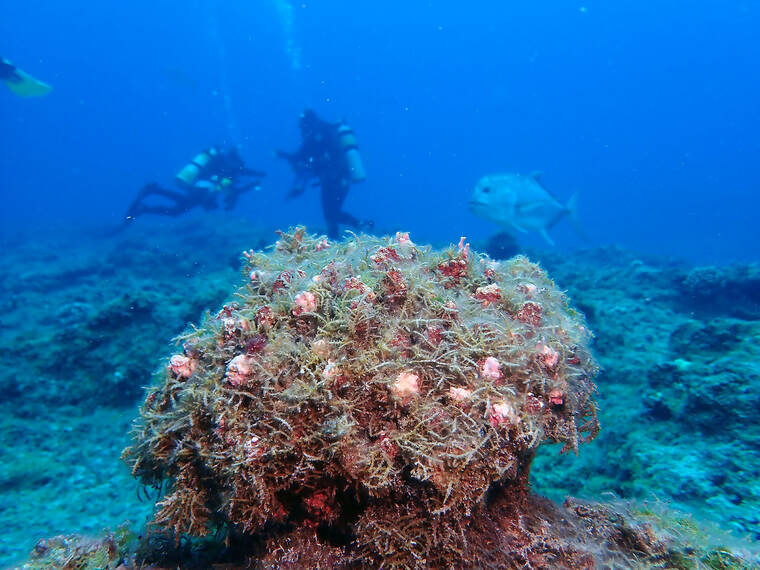
A team of divers conducting marine debris removal efforts in Papahanaumokuakea Marine National Monument in September recently found a nuisance alga known to grow quickly and smother coral reefs. (U.S. Fish and Wildlife Service/Special to West Hawaii Today)
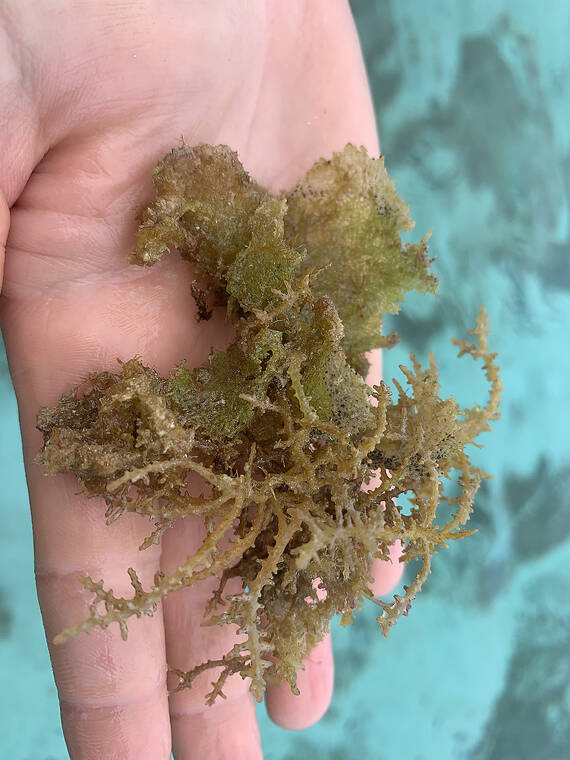
Chondria tumulosa is nuisance alga known to grow quickly and smother coral reefs. (U.S. Fish and Wildlife Service/Special to West Hawaii Today)
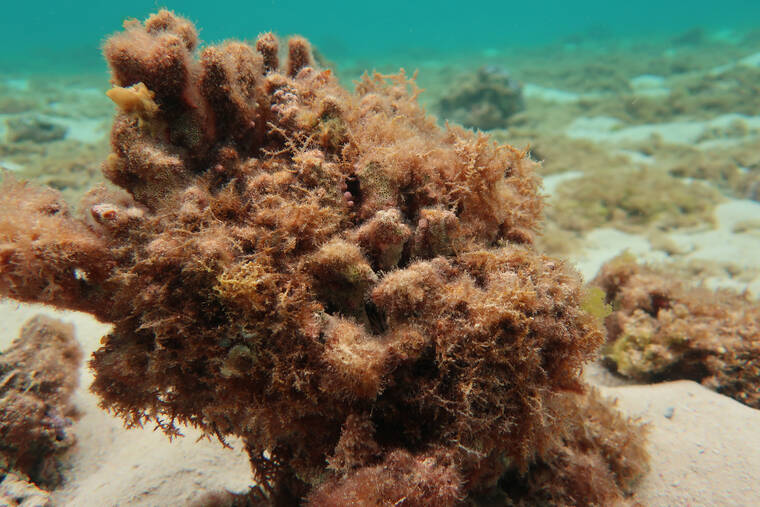
Chondria tumulosa is nuisance alga known to grow quickly and smother coral reefs. (U.S. Fish and Wildlife Service/Special to West Hawaii Today)
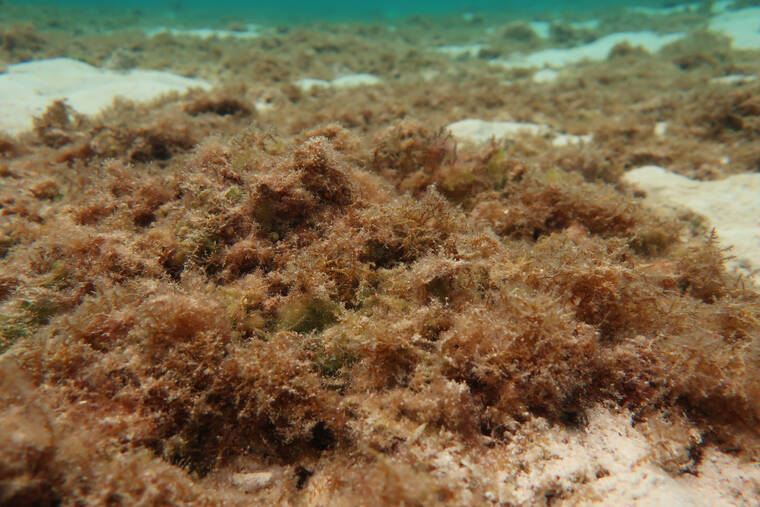
Chondria tumulosa is nuisance alga known to grow quickly and smother coral reefs. (U.S. Fish and Wildlife Service/Special to West Hawaii Today)
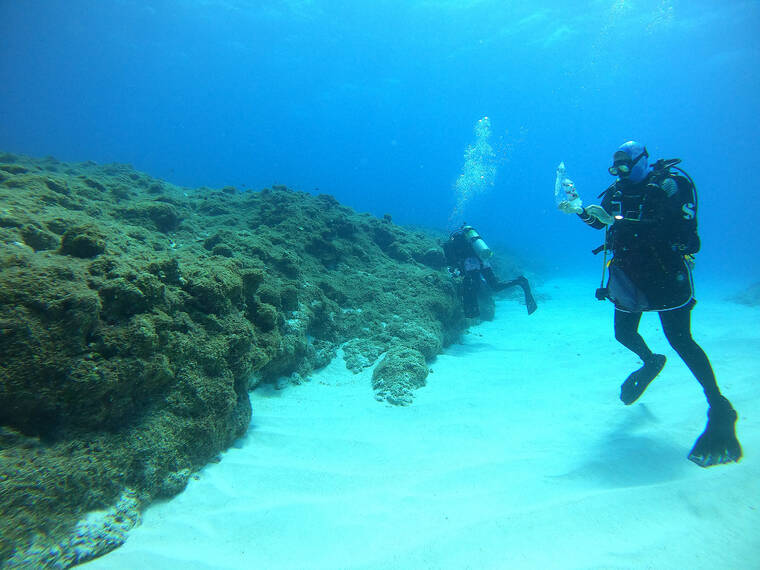
The alga that resembled Chondria tumulosa was located near the north reef of Midway Atoll National Wildlife Refuge and Battle of Midway National Memorial (Kuaihelani). Chondria is a nuisance alga that can grow quickly and smother coral reefs. (U.S. Fish and Wildlife Service/Special to West Hawaii Today)
A team of divers conducting marine debris removal efforts in Papahanaumokuakea Marine National Monument in September recently found a nuisance alga known to grow quickly and smother coral reefs.
A team of divers conducting marine debris removal efforts in Papahanaumokuakea Marine National Monument in September recently found a nuisance alga known to grow quickly and smother coral reefs.
The alga that resembled Chondria tumulosa was located near the north reef of Midway Atoll National Wildlife Refuge and Battle of Midway National Memorial (Kuaihelani). Chondria is a nuisance alga that can grow quickly and smother coral reefs, according the U.S. Fish and Wildlife Service.
ADVERTISING
The Marine Debris Team was able to get samples of the alga found at Midway Atoll to the lab quickly for analysis. The species was confirmed through DNA sequencing as Chondria tumulosa.
The discovery of the outbreak at Manawai (Pearl and Hermes Atoll) in the monument first occurred during a NOAA cruise in 2019. On that expedition, research collaborators from the College of Charleston diving at Manawai described mats of red alga as stretching for the length of football fields, smothering native corals. This invasive-like alga was identified as a new species to science in 2020 and was named Chondria tumulosa.
Researchers are investigating the ecology and physiology of the nuisance alga. They are also developing remote surveillance techniques. Other research includes understanding of what might be fueling its rapid growth. Possibilities include removal of grazing pressure or an excess of nutrients from upwelling. The goal of this research is to develop appropriate management actions such as techniques for early detection and rapid response, and best management practices to reduce its spread.
To date, Chondria has not been confirmed to occur at any other location in the world. Although Chondria displays invasive characteristics, it is not yet clear whether the alga is native to Hawaii, or was introduced from another region.
Researchers are not yet labeling the alga as “invasive,” instead opting to call it a “nuisance” species for its invasive-like qualities. Grazers such as parrotfish usually feed upon native species of algae to keep them from growing out of control; but native grazers have not been observed feeding on Chondria.
Research and supply ships have been practicing caution to not inadvertently transport this species to other parts of the Monument or the main Hawaiian islands. Now that the alga has been confirmed to be at Midway Atoll, the Resource Protection Working Group of PMNM is working to identify mitigation strategies to limit the spread of Chondria in the Monument.
When an invasive species invades a terrestrial ecosystem, researchers can design effective strategies for removal of the invasive species, helping restore native ecosystems back to their original state.
These same strategies cannot be applied to removing invasive species from marine ecosystems because of the ease with which their drifting larvae can move between locales to colonize new habitats.
As co-managers of Papahanaumokuakea Marine National Monument, NOAA, the U.S. Fish and Wildlife Service, State of Hawaii, and Office of Hawaiian Affairs are committed to conducting extensive research to introduce effective solutions that will protect the Hawaiian archipelago.
For more information, www.papahanaumokuakea.gov.


